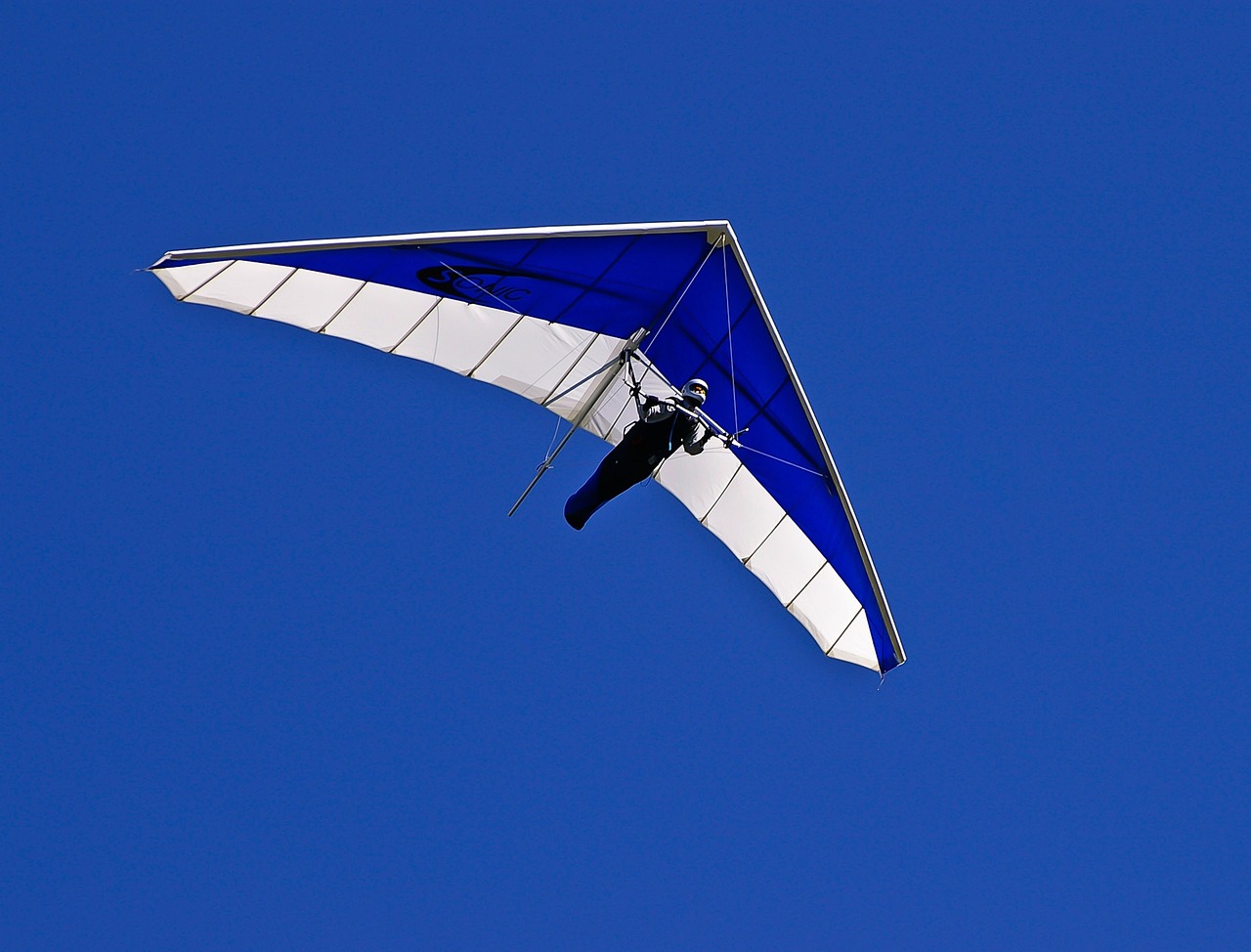-
- Origins: The origins of hang gliding can be traced back to the flight experiments of 19th-century German aviation pioneer Otto Lilienthal.
- Modern Hang Gliding: The sport of modern hang gliding began in the 1960s and ’70s in California, USA.
- Kites to Gliders: The development of hang gliders was inspired by the construction of Francis Rogallo’s flexible wing kites.
- Personal Flight: Hang gliding is one of the closest experiences humans can get to personal flight, often likened to being like a bird.
- Control: Hang glider pilots control their direction and speed by shifting their body weight.
- Thermal Lifts: Pilots often use thermal updrafts (rising warm air) to gain height and extend the length of their flight.
- Training: Before their first flight, pilots undergo thorough ground training, including lessons in meteorology, aerodynamics, and emergency procedures.
- Launch Sites: Most hang gliding flights begin from a high point like a hill or a cliff. Some places have built special ramps for launching.
- Tandem Flights: Beginners can experience hang gliding through tandem flights, where they’re harnessed to an experienced pilot.
- World Records: As of 2021, the record for the longest hang gliding flight is 764 km, set by Dustin Martin in 2012.
- Speed: A hang glider can fly at speeds of up to approximately 80-100 km/h.
- Quiet Sport: Hang gliding is a relatively quiet sport. Apart from the wind, there’s little noise, which some pilots say adds to the peaceful experience.
- Safety: Despite the perceived risk, hang gliding is generally safe when practiced responsibly, with proper training and equipment.
- Materials: Today’s hang gliders are typically made from aircraft-grade aluminum or carbon fiber, with a sail made of durable synthetic fabrics.
- Portability: Modern hang gliders are designed to be disassembled and packed into a bag for transport.
- Competitions: There are local, regional, national, and international hang gliding competitions, with different tasks like cross-country distance, speed runs, and spot landing.
- Wildlife Encounters: Pilots often report flying alongside birds, who also use thermals to soar.
- Weightlessness: When flying in rising air, pilots can experience brief periods of weightlessness.
- Fitness: Hang gliding requires a moderate level of physical fitness, especially strength in the upper body and core.
- Global Sport: From the Alps to Rio de Janeiro, there are stunning hang gliding locations around the world.
Top 10 Places For Hang Gliding In The World
- Rio de Janeiro, Brazil: The view from the top at Pedra Bonita takes in the city, the Atlantic Ocean, and the iconic statue of Christ the Redeemer. The takeoff is high above the city, providing an unmatched panorama.
- Interlaken, Switzerland: This is a great place to fly over the Alps, with stunning views of the surrounding snow-capped peaks and pristine lakes.
- Kitty Hawk, North Carolina, USA: Known as the birthplace of aviation, Kitty Hawk offers year-round hang gliding experiences over the coastal landscapes of Outer Banks.
- Golden, Colorado, USA: The smooth, dry air in Colorado is ideal for hang gliding. Lookout Mountain provides panoramic views of the Denver area and the Rocky Mountains.
- Byron Bay, Australia: Famous for its consistent flying conditions, Byron Bay offers stunning views of the eastern Australian coastline.
- Tolmin and Bohinj, Slovenia: These locations offer the opportunity to glide over the stunning landscapes of the Julian Alps and the Soča valley.
- Ölüdeniz, Turkey: Known as the Blue Lagoon, this location provides stunning views of the turquoise Aegean Sea and is one of the most photographed beaches on the Mediterranean.
- Birdman Academy, Japan: This spot near Mt. Fuji offers views of the mountain, countryside, and Pacific Ocean.
- Dune Du Pyla, France: As the tallest sand dune in Europe, it’s a popular spot for hang gliding. The coastal wind patterns make it great for beginners.
- Wasserkuppe, Germany: Known as the “Cradle of Gliding”, Wasserkuppe is the birthplace of gliding and offers great thermals and a variety of weather conditions for all skill levels.
Facebook Comments


































